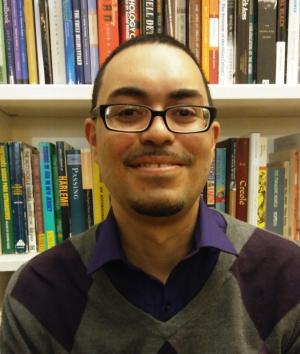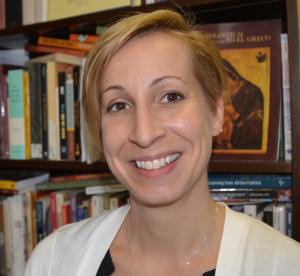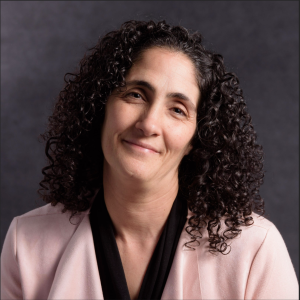Resources

A traumatic event is one that is sudden and unexpected. Is Covid-19 a traumatic event? Jonathan Porteus, Ph.D., a licensed clinical psychologist who oversees a crisis and suicide hotline in Sacramento, CA., points out high levels of emotional distress from the Covid-19 crisis, and recommends attending to this mental health crisis as a traumatic event. Porteus comments, “Our society is definitely in a collective state of trauma.”[1] The Covid-19 pandemic may also lead to an upcoming wave of mental disorders claims Sandro Galea in an April essay published in the Journal of the American Medical Association.[2] Online learners may be experiencing traumatic emotional distress which may have an impact on their academic performance in their online classes. Then, how can educators in the online teaching of theology and religious studies offer trauma-informed care for online learners? And what should they avoid? What to do: The educator will likely observe changes to an online learner’s behavior and academic performance if mental health challenges arise from traumatic events. In the face-to-face classroom, the educator is, presumably, more easily able to perceive mental health warning signs such as mood changes, change of appearance, absences, and unusual behaviors. In an online class, it is more difficult to assess warning signs of mental health distress. Thus, online educators need to develop strategies for identifying mental health challenges in order to provide appropriate trauma-informed online learning. Trauma often impacts the psychological mechanisms which regulate emotions. If there is a sudden change in academic performance, disruptive interaction in the online discussion, disrespectful behavior toward peers and faculty, or failing grades, an educator should reach out and check on a student’s emotional state. It is critical for educators working from a perspective of trauma-informed online learning to know the warning signs of mental health challenges. Bonny Barr offers these guidelines for identifying the warning signs of mental illness or emotional distress in online students.[3] ATYPICAL BEHAVIORS (a change from the usual) UNUSUAL BEHAVIORS ACADEMIC PERFORMANCE PROBLEMS (Sharkin, 2006) Becoming irritable/short-tempered/obsessive Emails are accusatory, manipulative, sexually inappropriate or threatening Late assignments from beginning of course Sudden deterioration in quality of work Discussion post contents are: bizarre, fantastical, paranoid, disruptive, confused, or show disorientation Failing quality of work from beginning of course Abruptly begins turning in late assignments Student clearly seems out of touch with reality Not returning emails or phone calls Becoming disrespectful in discussion posts Not turning in work at all Stops responding to email Not re-doing work when given an opportunity Content of work becomes negative/dark/odd in tone Ongoing display of anxiety about assignments Trauma-informed care in online-learning is to acknowledge the earlier signs of traumatic experiences. It means that it is valuable to contact online learners when they display atypical behaviors. As Bruce Sharkin states, “Early intervention can help reduce the chance of a student’s problems turning into a crisis situation later on.”[4] An online educator should be encouraged to address a mental health concern in the early stages of a sudden change of behaviors and identify the emotional distress caused by stress. What not to do: Trauma-informed online learning begins to create a safe space in the learning interaction. When an educator reaches out to learners by any vritual communication, it is critical not to be judgmental. Remember you are not there to give a diagnosis or ‘solve’ mental health challenges. Your first contact is to initiate safe conversations with acceptance and encouragement. For example, an educator can say, or write an email, “I’m touching base with you because I noticed you hadn’t submitted anything for several weeks. It seems as if you are having a rough time,” or “In the discussion post, I see you are stressed out.” An educator’s concern and empathy can be expressed by virtual communications. This approach will encourage a learner to share their struggles without having defensive responses and confrontations. An education in trauma-informed online learning can be the first responder for students. Also, a trauma-informed educator needs to equip themselves to have counseling resources available to students and to know the institutional policies for students with mental health challenges. If anything in the initial conversation leads the educator to be alarmed or have increased concern about the mental health of the learner, then the academic support process can be initiated. Trauma-informed educators in online learning occupy a unique position to help learners be aware of their mental health struggles and seek helpful resources for their well-being. Further, trauma-informed educators in the online teaching of theology and religious studies are in a unique position to influence religious communities by caring for the online learner. When online educators equip themselves to address the mental health challenges of learners, the online educator becomes a great support system for responding to the psychological needs and wellness, not only for online learners, but also for religious communities during the Covid-19 pandemic. [1] Katherine Kam, “Mental Health an Emerging Crisis of COVID Pandemic,” https://www.webmd.com/lung/news/20200508/mental-health-emerging-crisis-of-Covid-pandemic?ecd=wnl_spr_051120&ctr=wnl-spr-051120_nsl-LeadModule_title&mb=210I6N5H5gRJeKEyXlsPHQPCAlmlkpgV9%40IzB8Po%2fgY%3d, May 8, 2020, (Accessed May 12, 2020). [2]Sandro Galea, et.at., “The Mental Health Consequences of COVID-19 and Physical Distancing: The Need for Prevention and Early Intervention,” Journal of the American Medical Association, Published online April 10, 2020. (Accessed May 12, 2020), doi:10.1001/jamainternmed.2020.1562. [3] Bonny Barr, “Identifying and Addressing the Mental Health Needs of Online Students in Higher Education,” Online Journal of Distance Learning Administration, Volume XVII, Number II, Summer 2014 University of West Georgia, Distance Education Center, (Accessed May 12, 2020) https://www.westga.edu/~distance/ojdla/summer172/barr172.html [4] Bruce S. Sharkin, College Students in Distress: A Resource Guide for Faculty, Staff, and Campus Community (Taylor & Francis, 2013), 52.

The day before we were told to go online, rumors that we would transition were flying think and fast. It was a Tuesday. I was supposed to head to Vanderbilt that evening to give a talk on Wednesday, but the night before, it had been canceled. Given this, I suspected that we (CU Boulder) would be going online soon. Earlier in the day when I met with my seminar (a class that, despite being label a seminar, had over 30 people), I told them that I thought online was coming. The entire room burst into conversation, much of it unease, some of it amusement, most of it because they knew I was barely managing our minimalist Canvas site. We had already experienced some small adaptations together. A week or two before, a student who was experiencing back spasms asked if she could lie on the floor during the class. I said yes, and she participated while lying flat on her back. Prior to our last in-person session, a student had emailed me to say that he thought he had Covid-19 and asked if he could attend via FaceTime, on a classmate’s computer. I said yes, and he participated from his screen. Using that flexibility as our foundation, we spent 30 minutes planning our online transition together. In the end, I am responsible for the decisions that were made, but I am very glad that my students and I worked through the plans together. We discussed the possibility of meeting over Zoom. While people really liked our classroom community, we had concerns about trying to have a 34-person conversation over the computer. (At this time, I had never used Zoom and did not realize that I could break the class into small groups with the push of a button.) In addition to questions about the feasibility of the Zoom platform, students were anxious about internet access, changing work schedules, and responsibility for younger siblings. So, we decided that we would have discussion boards. I asked them if they thought that it would be fair to have everyone post one initial thought and two comments on existing posts per day. We agreed, as a group, that one comment could be part of an ongoing conversation on your own post, but that the other comment had to be on someone else’s. We discussed what they wanted and needed in order to make this plan work. Deadlines. They wanted clear deadlines and they wanted me to promise that I would not move things around on them. As the semester would wear on, one by one, they would repeatedly thank me for never moving anything around. We agreed that the initial post needed to be up by the start of class time, and that they had 25 hours to post responses. I talked about what I wanted in the discussion boards: for them to try not to repeat each other, and to make sure that someone commented on almost everyone’s post. When I brought up that second concern, one student nodded. I knew she would monitor our inclusivity. I was delighted, and feel that I can take very little credit, for what happened on our discussion boards over the following weeks. I posted questions to get them going; one of which was always, “Share a quote that struck you as interesting and tell us why you were intrigued by it.” They answered. They picked quotes they liked, they picked quotes that they did not understand, they picked quotes for which they needed more context. They brought their confusion to each other. Frequently, I would log in to discover that a question posed late at night, and probably aimed at me, had been answered by a student before I woke up. But maybe more impressive than their willingness to share their vulnerability, to share their “I do not knows,” they were willing, firmly and politely, to disagree with each other. They challenged each other repeatedly. They debated interpretations of texts, but they also called each other on more charged issues, like failures to see structural racism. Each time, I was struck by the fact that they did so without pointing fingers or descending into accusation. They remained firmly in intellectual community with each other. To be clear, some of these things had been happening in the classroom all along, but most were not, or at least included only the most talkative of the class. These discussion boards were very surprising to me, and upon reflection, I think this kind of connection occurred because I let them choose a format. I did not let them chose the format because I knew that it would lead to these conversations—I did it because I have never taught online, did not know what to do, and wanted to get buy-in for my plan. Wonderfully, my students responded by taking ownership of the space. They had been asked what they wanted to do, and with that freedom they went ahead and did it.

Teaching that prioritizes inclusion and equity is an essential task for instructors. However, teaching remotely due to the Covid-19 pandemic presents unique questions that faculty should address to support their students’ emotional and cognitive well-being. Below, I present six tips to promote an inclusive and equitable remote learning space for this moment. Acknowledge your own and students’ emotions Given the current moment, many students are experiencing stress and trauma. A trauma-informed pedagogy asks instructors to acknowledge and reflect on their own emotions as they prepare to enter this new learning space. Similarly, provide a space for students to process their own emotions as well. This can be done through individual reflection prompts, asynchronous discussion boards, or a guided discussion in a synchronous space. Consider if you can give students agency in the course Since we know students may be experiencing additional burdens and stress, consider ways that you may be able to provide students flexibility in the remainder of the course. A first step is to allow students to help shape the learning environment, including considerations for engagement and their expectations for themselves and others in the course. Additionally, it may be beneficial to give students choice in the types of assignments or tasks remaining in the course. Giving students some agency will allow them to feel some sense of control in a time of great uncertainty. Understand students’ unequal access to technology in determining how to run your course A recent post from PhysPort, a blog about teaching in physics provides considerations for what faculty should consider when thinking about students ability to access the course: Recognize that not all your students will be able to attend synchronous online classes due to internet access, connectivity, scheduling, health, and family situations. Some platforms allow participants to call in via phone, which allow them to hear and participate in audio conversations, but not see slides, screenshare, or video. Find ways for students who can't connect in real time to still participate (e.g. by making recordings available after class), or consider not running synchronous classes at all: asynchronous learning can be much more equitable for students with different levels of access, health and privilege. These are also good things to keep in mind when you are teaching in-person classes. Consider available grading options This may be difficult for some faculty in professional schools and in some undergraduate programs, but I encourage instructors to be open to new ideas for grading. For example, some have suggested that you tell students that they cannot receive a grade lower than what they currently have in the class. Such an approach will help deescalate student stress levels and acknowledge that not all students will have equal opportunities or access to complete the rest of the work for the course. Ensure your materials and technology are accessible As you integrate new ways to engage students and access materials for your course, ensure that these new platforms and methods are accessible. You should consider how students who use assistive technologies can engage the course as well as best ways to students with accommodations. Do what you can to promote your own self-care We recognize that this is a difficult time for you as instructors as well. For some, this new reality may mean balancing professional and personal responsibilities in unique ways. For others, this can heighten feelings of loneliness and isolation. Regardless, of your situation, it is important to do what you need to do to take care of yourself. It is though caring for our own well-being that we can best support our students. These six steps are only a beginning for how to foster inclusion and equity in your remote course. I recognize that this moment presents many challenges. I also recognize that others may have ideas to promote an inclusive and equitable course environment. If you have additional ideas, feel free to leave them in the comments for others to read. Additional Resources “As Human as Possible” by Colleen Flaherty, Inside Higher Ed “Hope Matters” by Mays Imad, Inside Higher Ed “Inclusion, Equity, and Access While Teaching Remotely” from Rice University Center for Teaching Excellence “Maintaining Equity and Inclusion in Virtual Learning Environments” from san Diego State University “Please Do a Bad Job of Putting Your Courses Online” by Rebecca Barrett-Fox

I, like so many, have been flooded with a mixture of emotions during this pandemic and self-isolation. While feelings of fear and anxiety often overcome me, I also have a profound sense of gratitude. I am privileged to be able to take a step back and ask religious questions those deep questions of meaning and value–with fellow religious educators. It is from phone conversations in isolation that Dr. Kathleen O’Gorman and I came to wonder what is this emergent curriculum, or “curriculum of pandemic,” that has descended upon us all, teaching us? What might we learn and how we are we called to respond in meaningful, educative ways? The first place Kathleen and I thought to process this emergent curriculum was with our learning community, to learn from this pandemic with our students and alums. We invited a small group of about 10 people, all of whom were enthusiastic about this gathering, into a process of introspection and learning. It was apparent from our initial correspondence leading up to and during our first session that we all want to feel connected in some way right now. This affirmed for me the need not just for community, but to create an intentional learning community. I –we– longed for a “community of conversation”–to connect and make meaning together. For me, the calling to teach means both teaching and learning and this pandemic called my colleague and I to be more intentional about our praxis as teachers and learners together. Kathleen coined the titled for our virtual sessions “Pandemic Pandemonium.” There is no script or textbook that tells us what we can learn and how we should respond to this global crisis; therefore, we developed a framework of four sessions from which will flow a process of unpacking this curriculum of pandemic. Drawing inspiration from Kathleen’s gifts of music and aesthetics, we framed each one around a different song to evoke our affective sensibilities. In our first session, we set the context for our process of teaching and learning through the pandemic by listening to Sam Cooke sing “A Change Is Gonna Come” set to a video with still images of people standing up for their human rights across the world throughout different moments in history. In sharing our interpretations and insights from this video and song, we discussed how we might connect these historical movements for change to the change emerging before us right now. What change do we want to see from this experience of sheltering in place, from teaching in learning through new modes and mediums, and from recognition the earth is healing itself while we remain still? We concluded that first session by observing how each movement for change in society was a movement towards deeper inclusion. How, then, is this curriculum of pandemic guiding us towards greater inclusivity? This set the tone for our next session, “Go to your room” (something Mother Earth seems to be telling us right now), and the introspection on our feelings and emotions as we withdraw from everyday life. Following John Lennon’s song, “Isolation,” we invited our group to start thinking about how this time away has opened new patterns of living. How have our feelings given rise to new ways of thinking and experiencing the world and how might we help others (those we serve, family, friends) discern the meaning and value of isolation as we are experiencing it? Our third session will reimagine how we “Come Together” (using the Beatles cover song by Gary Clark Jr.), by asking: What now? What is the meaning of all this? What are we learning from gathering in new ways and how does that inform and transform our praxis as religious educators; how does this change in patterns of living call us to rethink our curriculum and praxis towards greater inclusivity? In our final session, we curated a curriculum of closure to be the start of a new beginning. With help from The Beatles again, “Let it Be,” we reflect the meaning of Sabbath during this time as we ask what is Mother Earth telling us? How are we called by Mother Earth to Let it Be? We end our session with a pastoral plan informed by what we learned and how we are called to respond. I hope to return to these reflections as our process unfolds in the coming weeks. In the meantime, I am sharing this experience in developing a process curriculum to invite others, if you have not already begun to do so, to engage in a process of introspection and discernment with your learning community to uncover how your teaching and learning can respond to a curriculum of pandemic.

So many of us are struggling to connect meaningfully with our students during this period of unexpected distance. When we don’t get in-person connection time, it’s critical for us to build social and spiritual connection with our students within the online learning space. Giving our students numerical feedback and written feedback on submitted assignments is not enough. While some of my students have a strong network of relationships and resources to sustain them during this time, some do not. I see it as my responsibility to provide some opportunities for students to maintain and deepen connections with each other, themselves, and God. Live check-ins In my live, online classes, we check in with simple questions to start the session. I lean toward the veiled spiritual direction during these times—directing my students’ attention toward where God *is* present, rather than where God isn’t present. For example: • What is working for you in this time of isolation? • For what are you grateful right now? • Where are you finding light within so much darkness? It is my hope that students will take inspiration from each other’s answers. To be clear, this is not to approach the pandemic with a ‘Pollyanna’ point of view, but rather to illuminate that God is still at work, even when we are confronted with challenging circumstances. Student-led prayer on live meetings At the start of each live meeting, there is a student responsible for leading prayer. I instruct my students to choose a video, piece of art, or poem to share with us. We follow it with a minute or two of silent reflection and close with “words directed at God”—in other words, prayer. I provide them with links to prayers and examples of “words directed at God.” We do this in the classroom as well, and I find it to be a nice piece of continuity with the online learning environment. Collect evidence or fun or frivolous “accomplishments” I had my students check in one day with “What’s something fun or frivolous you’ve ‘accomplished’ during the shelter-in-place?” I found it important to clarify the idea of ‘accomplishment’ for this exercise. I explained the capitalistic assumption that we can still produce during this quarantine. This is not that. Rather, what are they doing for fun? Which hobbies are they picking up—either from a while ago or for the first time? We collected video and photographic evidence of their ‘accomplishments’ on a Padlet, a handy, potentially private, online board where students can creatively post their work. Students posted audio clips of music they composed, videos of themselves walking in the woods, and photos of knitting creations or plates of cookies, to name a few. It’s important for us to demonstrate to our students that having fun, letting loose, and being creative are critical parts of being a full human being, especially when we might feel like our usual outlets are cut off for these activities. It is my hope—again—that students might be inspired by others and offer support and encouragement to their classmates’ endeavors. Community building on FlipGrid I like the online learning platform of FlipGrid because it allows me to connect asynchronously with my students face-to-face and voice-to-voice. This is especially helpful for students who face challenges making it to the live online meetings. I recently posted a prompt for a simple game of two truths and a lie for my students. It was a fun, simple way to connect and communicate while getting to know each other better. Here’s a great article with even more ideas for ways to connect with students. All in all, it seems more important than ever to be attentive to the social aspect of our classroom learning environments, especially in the field of Religious Studies and Theology. I hope these steps will be helpful for you in nourishing this facet of your students’ academic lives!

In the history of Christian thought, suffering has frequently been conceptualized as a process of “refinement.” Suffering “refined” believers and religious communities by (painfully) stripping away the unnecessary, as well as by revealing and perfecting the core dimensions of religious practice. I am writing this on the first day of the Spring Break—normally a time to slow down and reinvigorate oneself in the midst of a busy semester. However, this year it also comes in the midst of the global Covid-19 outbreak. In the state of Oregon, where I teach, the governor issued the stay-at-home order this morning. All universities in my state had temporarily shut down last week, and my institution is moving from face-to-face to fully online delivery. This is also the case with many universities across the country. Instead of refreshment, Spring Break has brought an accelerated work pace, deep concern for our families and communities, and a host of uncertainties about what lies ahead. As a teacher, alongside my colleagues, I am working to determine the best ways of adjusting our traditional face-to-face classes to alternative modes of delivery. As a theologian who studies the history of Christian theologies of suffering and healing, I cannot help but think of the Covid-19 crisis as a reality painfully refining our pedagogies, stripping away the obsolete and revealing and perfecting the essential dimensions. I am not suggesting that this global health disaster is somehow a positive force in the history of higher education (or humanity in general). I mourn the lost lives and the health, economic, and social tolls of this pandemic, the full extent of which we are yet to experience. At the same time, I am convinced that, as self-reflective educators, we are called to think creatively, including about negative factors, and, without denying the harm, still imagine possibilities of a positive impact they might bring upon our practice of teaching. By, painfully, taking away our more conventional models of instruction, the current crisis might refine essential, but at times, neglected core dimensions of a vibrant pedagogy; one that includes innovation and creativity, meaningful connection with our students, and awareness and responsiveness to wider cultural questions. As Covid-19 forced classes to move online, it presented faculty with a novel challenge of adjusting all face-to-face courses for remote delivery. As I ponder the best practices of successfully conducting my undergraduate honors seminars over Zoom, these sustained deliberations yield new pedagogical insights and highlight some deficiencies of the ways I have taught this class in a traditional format. The Covid-19 challenge pushes us to exercise renewed pedagogical creativity with our courses, which we are being forced to re-examine, reform, and even re-invent afresh. The recent days have brought a heightened awareness of many students’ daily sacrifices in pursuit of a college degree. I learned of some of my students’ lack of high-speed Internet access in their homes, of others’ inability to afford plane tickets, and yet others’ struggles with academic demands due to anxiety, intensified due to the outbreak. Covid-19 and the resulting academic adjustments have fostered a new, more meaningful, level of knowing my students, understanding their unique needs, and therefore being better able to teach, mentor, and support them. In an academic era anxious about the relevance of the humanities, the daily disruptions of Covid-19 may present students with intellectual opportunities to develop their own responses to the crisis in relation to the humanies’ rich traditions of making meaning of and resisting suffering. As instructors, we might intentionally make space in our courses to integrate questions exploring such connections between the past and the present (expressed in world religions, literature, philosophy and art). After all, this profound and unsettling crisis might yield unexpected refinements of our students’ pursuits of knowledge and justice, akin to its refining of our own teaching craft. (This blog has previously appeared on the University of Chicago’s Craft of Teaching the Academic Study of Religion blog.)

The most important pedagogical practice I have engaged in during this time of pandemic stress and isolation is making sure to check in with my students. At the beginning of every class, after we pray, I poll the students to find out how they are doing. Responses are anonymous (though have I have had many students email me to follow up about their answer, letting me know which responses were theirs). This honors the humanity of my students and gives me the opportunity to know what is in the Zoom room with us when we are trying to learn together. This also gives the whole class the opportunity to know how we can pray for the members of our learning community. My school moved to online learning the week of March 16. Each week I have asked different questions and offered different ways to engage while also offering space for how my students are coping. I have maintained four core questions: How am I doing in general? How am I feeling about my work in this course? What else do I need my professor to know? How am I feeling? This past week, I added a question about how they were feeling about the end of the semester. The week after Easter I asked students to share where they had seen signs of hope and new life. I have shared with my students that the most important thing right now is their mental, spiritual, and physical health. Not their schoolwork, not even for my class (I’m teaching my favorite class this semester and everything!). Taking time at the beginning of each synchronous learning time shows them that I am serious about that. When I ask students how they are doing in general, I have a multiple-choice response and one of them is “falling apart, like the world around me.” As their professor, I need to know when I have students who feel like they are falling apart. Not only do I take the opportunity to remind them that I am praying for them, but I also remind them that this is a perfectly normal response to a highly stressful situation and encourage them to seek help. I also get to remind myself that talking about course material might matter very little to the students who share that they feel this way. When I ask students how they feel about the course itself, I have another multiple-choice response option. One of those responses is “Help! I’m drowning!” I need to know when students feel like they are drowning in coursework. Just like me, my students are strapped for time to get work done and may often get interrupted by family members (including small children). Just like me, they may experience brain fog sometimes. When I know students feel like they are drowning, I can offer them a lifeboat. Do they need me to cut out some readings? Extend a deadline? Read a draft because they can’t tell if they are on the right track? Right now, my policy is that I will be as flexible as I possibly can with students; but if I don’t know that they need flexibility, I can’t offer it. When I ask students how they are feeling, I receive answers in the form of a word cloud. Each class these word clouds are profound, real, and heartbreaking. They are works of art reminding us of our humanity and the humanity of our peers in the classroom. We are tired, anxious, and stressed. We are worried and grateful. We are excited about graduating and devastated that it won’t be happening like we’ve been dreaming of for years. We are happy. We are sad. In a normal semester at the beginning of class, I ask students “How are you all doing today?” I usually receive short answers that are varying shades of “fine.” But this is not a normal semester, and we need more opportunities to check in and care about each other. We need to know that we are valued for more than our productive output in the classroom. What I am teaching my students through this practice is that I care about them as people, and I care about and honor whatever they are going through. As a seminary professor, this lesson is at least as important as the pedagogical content of my courses.

At first blush, the rest of the world’s shift to virtual learning in March seemed immaterial to our constituents who are in a heavily online MA in Jewish Education. We are lucky to boast well-trained and experienced online faculty and, perhaps even more important, students who are whizzes with Zoom, Schoology, and an array of online educational tools. Our people are at home in their virtual academic community. They already knew to mute themselves when not speaking in a teleconference, so we were really ahead of the game! Honestly, we felt immune to the whiplash others were experiencing with the very abrupt shift to online teaching and learning. And yet, ‘business as usual’ has been very UNusual. As a parent of three myself, I was quick to recognize the double demands that would be placed on working parents. This affects both our faculty and student body, many of whom are caring for young children and/or aging parents while working full-time in Jewish education. With childcare centers closed and many dual-career families trying to work remotely, this complexity appeared on our radar quickly. A few weeks after moving all courses online, we announced that Hebrew College would not be holding an in-person graduation in June. Especially for distance students, who cannot wait to finally bring their families to campus, hug their classmates and teachers, and wear a cap and gown to symbolize all that they have invested in their degrees, this was a huge blow. And now, we have gone from a trickle to a steadier flow of job losses, furloughs, and professional uncertainty. For the soon-to-be-graduates, many have gone from looking at the many pathways forward for their careers to worrying about their next paycheck in their current role. Even though our students are well-versed in learning online and forging and maintaining deep relationships over Zoom and FaceTime, this experience has been difficult. And so, I imagine for those faculty and students for whom virtual learning is new, and are experiencing the same stressors and uncertainties as I’ve described, this experience is multi-layered and fraught. With that in mind, I’d like to share my approach to graduate education, which builds on what I’ve learned over a decade-plus teaching virtually and adapts it for the moment at hand. • Focus first on the ‘extracurricular.’ With so much uncertainty and added stress in their personal and professional lives, students need to use the reflective space of the classroom to process their experiences—and to channel them into future material for growth. To my mind, this now trumps any other course objective. Once grounded and feeling seen (and this must happen repeatedly throughout the crisis), students will have greater capacity to engage in the material and hopefully reach many of the original course objectives. Do this by creating distinct spaces and times for processing and opportunities to grieve for whatever feels lost—this may be one-to-ones with faculty, a discussion board set aside for this purpose only, and/or facilitated/recurring peer conversations. These multiple entries allow for all types of processing so that students can find their comfort zone. • Uncoverage over coverage. Given time lost in the shift to online learning, and significant class time invested in shoring students up by reinvesting in relationships and care, it seems impossible that everything can still be covered. Though I toyed with it briefly, I shied away from upping the expectations of time for my course this spring in recognition of the physical and emotional work so many students were balancing on the home front. So, I focus on uncoverage rather than coverage. What happens when we let go of covering every thinker in a time period? Does it allow us to delve more deeply into one theologian? Or perhaps explore a single theme across many generations of thinkers? Allowing students the space to unpack (or uncover) texts, analyze them critically, and relate them to what’s happening in their lives today may make for better integration and assimilation of the material in the end. • Expect less, but give more. Where you can, lighten the reading load by removing a non-essential reading, mark one or more tangential sessions optional, and let students know that you will approach their work with an especially generous heart this semester. This is not meant to suggest compromising our academic standards, but to adjust them in places where flexibility exists. Recognize that students may have less to give academically but at the same time need more mentorship, empathy, and care—and try to navigate your own personal-professional juggle to accommodate those needs. To me, this is the most important thing I will ever teach my students. As teachers of theology, religion, religious education and thought, we have an added responsibility—and privilege—to create caring communities that recognize the holistic nature of our students’ lives. I am always mindful that when I teach these students, who are themselves the shapers of young Jewish hearts and minds, I am modeling both a pedagogical and ethical approach to creating a classroom community—be it ‘real’ or really virtual.

The current Covid-19 crisis is an extraordinary example of how knowledge, in every discipline, is expanding globally at an accelerating rate. Within months of the virus’ first appearance, hundreds of research projects were mounted: an examination of its interaction with human genomes, the impact on transmission of various social distancing models, the usefulness of masks and ventilators, potential drug treatments, and so on. Every day, experts modify their understanding of the disease and its impact. This explosion of knowledge is a global phenomenon that is not restricted to Covid-19. Every field of study is constantly being flooded with new data, theories and practices. As a result, no individual can hope to master a field. And, no matter how narrowly a teacher defines a course, its content is inevitably outdated by the first class. What then do teachers really have to offer? When our seminary decided to move into online learning in 2013, I participated in a Wabash seminar to help me design an asynchronous course on 20th Century Theologians. In that seminar, I discovered one of the paradoxical things about online learning: the student has a large portion of the world’s knowledge at their fingertips, but can be paralyzed by its volume. They need help developing skills to hunt down and organize the specific information that matters most for them in their current project. “Tiny talking heads” dispensing wisdom (the content of many early online courses) won’t give them that. Nor will simple Google searches. The Wabash seminar showed us that our job as teachers is to show our students how to hunt: places where their elusive quarry tends to hide, which guides to trust, how to recognize it, make choices, bring it in. Or to use another metaphor, the seminar suggested that we are cartographers and guides. We help students map out a field of knowledge and then hunt for hidden treasure. We give them a satellite view of the landscape, and then drop them into the jungle with a set of experiments, landmarks, and search strategies that may lead them to a mind-blowing discovery. It is these skills that will enable them to find what they need in our evolving knowledge-scape long after I’m gone and my own knowledge is obsolete. There are, however, several challenges to this way of learning. First of all, hunting is hard work. And adult students have many demands on their lives. Often, they register for asynchronous courses because they can work on them in the “cracks” of student life—after work, when the kids are in bed, on lunch breaks and weekends. So adult students may only take up the hunt seriously if the course design—especially its upfront presentation and initial exercises—grip their imagination and fire their passions. They have to feel that this hunt could lead them to something that will make a real difference in the career for which they are preparing. And even still (perhaps especially) when they are convinced of the value of the knowledge, they have frequently implored me to “just tell me what I’m supposed to know!” Secondly, students live in a constant barrage of information from TV, internet, social media and cellphones--especially during a crisis like the one we are in. To stay sane, they learn to filter much of it out. And that’s good--staying focused is important on a hunt. However, students’ particular filters may not be set for the learning they need—their filters may strain out exactly the data most important for their growth. So, part of the teacher’s task is to help students wake up, notice, and critique those filters. I’ve used the “Monkey Business Illusion” on Youtube (https://www.youtube.com/watch?v=IGQmdoK_ZfY) to illustrate the problem. Finally, creating learning maps and discovery exercises isn’t always easy for teachers trained in an older “sage on the stage” paradigm. Often our own hunting skills have been developed intuitively. We know how to find what matters, but it isn’t always easy to articulate the process. Nor is it easy to craft an engaging way to introduce the process to students. I’ve found it enormously helpful to build connections with others who are teaching online. They’ve shared creative apps and mashups for introducing students to the search process and for presenting what they find, and they have been sympathetic guides for me when I too have gotten lost in the knowledge jungle.

Serving as both a campus pastor and an adjunct instructor, I know that web-based teaching can feel disconnected for the students I'm called to serve. I'm also not satisfied with this reality. Thankfully, neither are my colleagues. Together, we're learning how to better design our web-based content to move from online teaching to digital formation. Formation is teaching that is received and incorporated into the development of a student’s knowledge, skill, vocation, or identity; all formation includes teaching, but not all teaching results in formation. My desire to teach at the college level came from a yearning, even a calling, to connect with students in their critical years of identity development and vocational exploration. I want to empower them with reason, wisdom, and knowledge that they might find not just lucrative careers, but rewarding lives. In other words, I desire to teach in a way that promotes formation. Online education doesn't change that intent, but it surely changes the methods. • Relate your pedagogy to student's priorities. Many of my students now have entirely different schedules than when we were all on campus. Some are out of work entirely, while others are working twice as many hours in shipping centers and grocery stores to make up for job loss experienced by other family members. Expecting everyone to be available at the time we agreed upon when the world wasn’t in the midst of a pandemic doesn’t work with the entirely different set of priorities that have emerged for them—and for us. Adjusting some class times and providing asynchronous modules has been essential in retaining student engagement. • Reformat your office (on campus or at home) to enhance engagement. There are many content creators who have helped us think through simple logistics to make recorded and live interactions more engaging to your audience. This short and particularly helpful clip from the VlogBrothers offers some insight into space, lighting, and equipment. Helping your students see your face, hear your voice, and appreciate your context provides multiple points of connection for those on the other side of the screen. • Augment--or avoid--information dumps. Information dumps are a mixed bag. For many of our courses, a certain amount of information is essential. Many of us are used to giving that information via lectures, while others utilize activities in class that require creativity. While it’s relatively easy to record a lecture for students to watch, that doesn’t necessarily promote content retention. Youki Terada provides a helpful literature review and provides five strategies to promote increased cognitive recall. I’ve found success with two of those suggestions in particular. ◦ Peer-to-Peer engagement, a common tool in physical teaching, can still be accomplished in online learning. If meeting in a synchronous class, technology like Zoom allows educators to separate the class into smaller groups to promote discussion among peers and then return to the larger group for a report back on their discussion. In asynchronous models, additional assignments to meet outside of the lecture and reading provide students a similar opportunity. Students can record brief summaries of the conversation and send them to the instructor. This increases their repetition of the information as well as provides accountability for participation. ◦ Incorporating images with teaching helps many types of learners access an additional reference point for the essential information. I’ve had particular success utilizing a core image to guide a theme, sometimes for one class, a section, or even an entire semester. This provides a sort of touchstone, to which other selected images then relate. One hint here: too many images can become distracting and reduce student interest. I only utilize images--and, at times, videos--for major themes in any given class (usually about 3-5 per class). • Gamifying still increases engagement. My mother-in-law, Kim Conti, is a math whiz and Senior Lecturer with SUNY-Fredonia. She taught me the wonders of Kahoot, a learning platform she’s used to rave reviews in her classroom for courses like Math for School Teachers. Quizlet, another resource she commonly uses, reports that 90% of students who use it earn higher grades. These tools allow users to utilize content created by other professionals or create their own games. Initially designed for use in a physical classroom, they’re introducing new features for web-based interactions. In all of this, it’s important to remember that alternative delivery methods aren’t lesser delivery methods. We may, however, have less skill at these methods, which requires more of us to learn and employ new ways of forming our students. That, then, is the key to doing this all well. Simply taking all of our in-person content and deploying it in the easiest fashion (for us) on the web can be called online teaching, but it doesn’t necessarily promote digital formation. In periods of crisis--and indeed, in all eras of education--we ought to design courses in ways that promote true formation. The best online teaching utilizes web-based tools to create points of contact that foster digital formation. The above suggestions can enhance our practices in ways that promote digital formation through our delivery of online teaching.